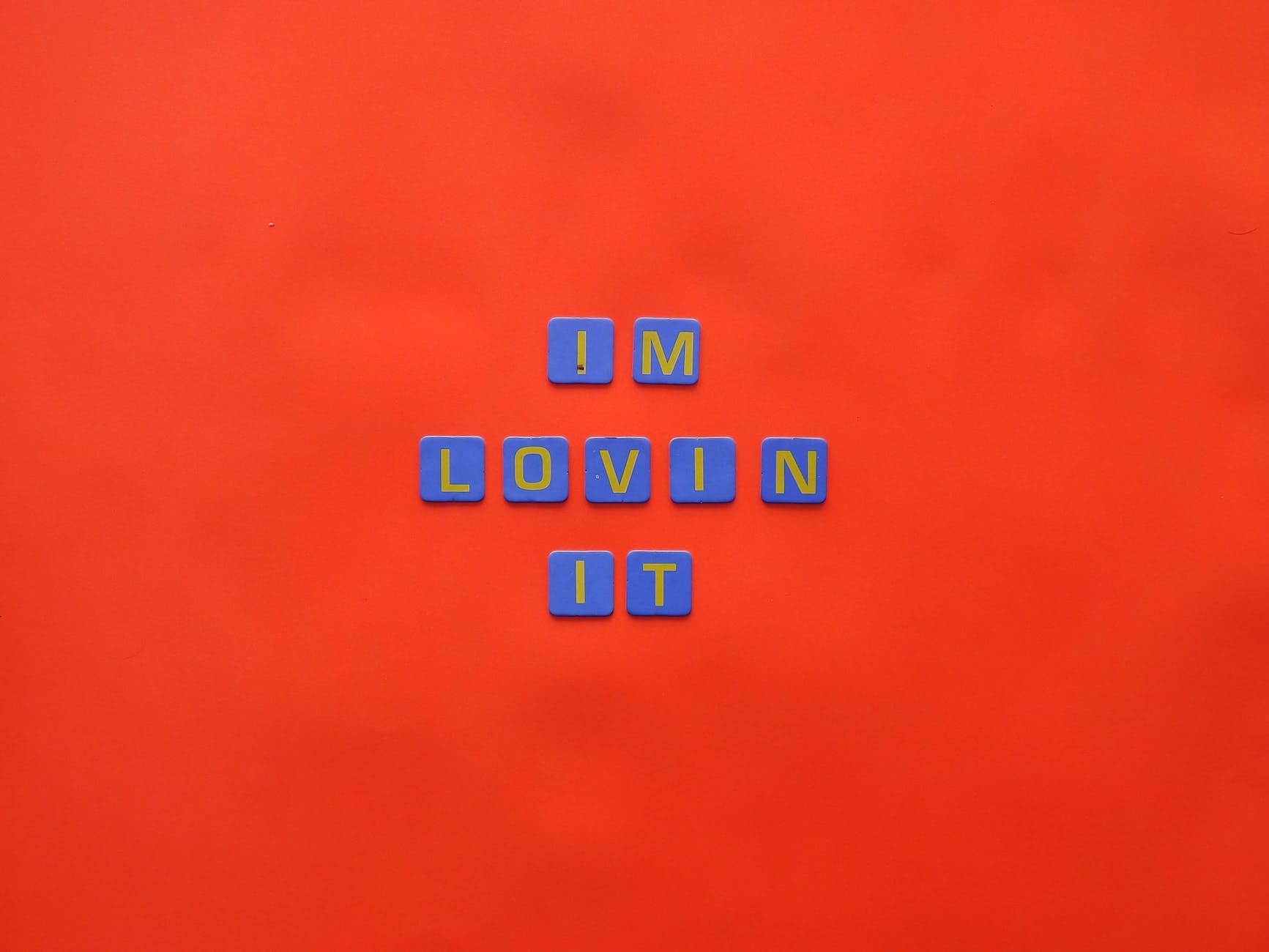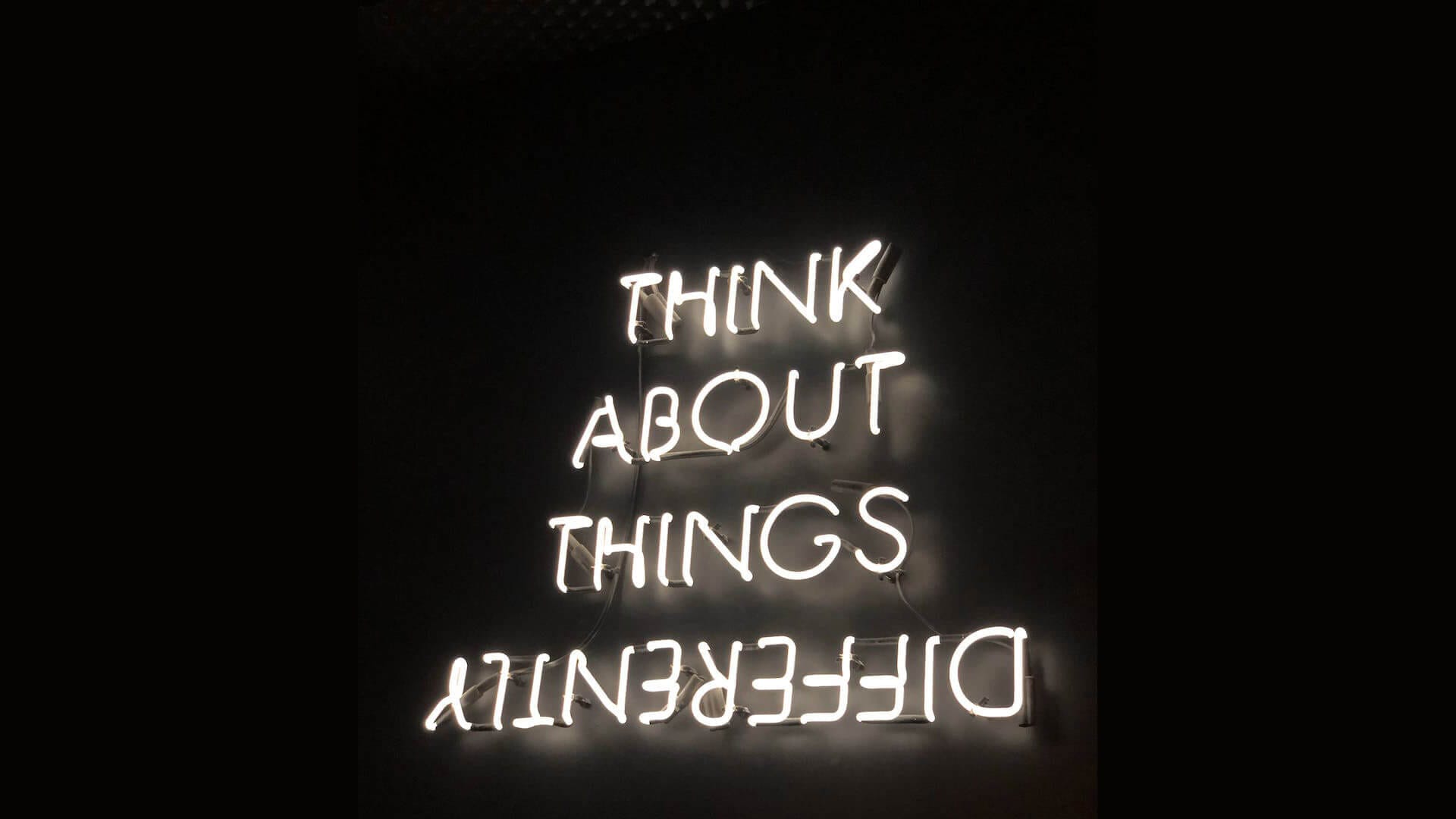How to work remotely and effectively from anywhere, Be productive, resourceful, and have a better…
Use these powerful techniques over the next month if you want to think differently and unlock your creativity.
We live in an age where much of our day feels repetitive, whether that is our daily commute, our job responsibilities, the habits we have after finishing work, or how we are increasingly relying on technology (especially now with AI making giant leaps) to do more of our thinking for us.
So, you can be forgiven if you aren’t given your prefrontal cortex enough of a workout – the part of the brain that is key to reasoning, problem-solving, comprehension, impulse control, creativity, and perseverance.
You may even think you don’t need to be creative in the future as AI can just ‘do it for you’, but you’d be doing yourself a big disservice as being creative is so important to humanity. If you don’t exercise your own brain to seek insights and problems to solve then you end up stifling your ability to create, and life essentially becomes harder to adapt to, regardless of whether AI is there as a tool to lean on or not.
Therefore, it’s imperative we find moments in our day to exercise our mind to think differently (think outside the box), and to unlock our creativity and ability to display original thinking.
If you were to refer to and implement just one creative suggestion each day for the next month then your brain will become far more efficient at being able to develop creative insight, and will find you become less stuck in limited repetitive thoughts and biases.
So, here are 30 suggestions on how you can unlock your creativity each day:
1) Be curious and ask questions about everything


Curiosity and asking questions, especially open-ended questions without certain structured answers, can inspire creativity and innovation whilst leading to new ideas and discoveries.
Not only do you broaden your knowledge by exploring new things, you also challenge current assumptions you may have which can foster empathy and improve problem-solving skills.
Asking questions allows us to gather information and perspectives that we may not have considered before, leading to more effective problem-solving.
How to take action now:
- Start with the basics: Ask open-ended questions that begin with “what,” “why,” “how,” and “when.” These types of questions encourage more detailed and informative responses.
- Listen actively: Pay attention to what the other person is saying, and ask follow-up questions based on their responses. This shows that you are interested and engaged in the conversation.
- Be open-minded: Approach conversations and new experiences with an open mind, and be willing to consider different perspectives and ideas.
- Ask for clarification: If you don’t understand something, don’t be afraid to ask for clarification. This shows that you are engaged and interested in understanding the topic more deeply.
- Explore new topics: Read books, watch documentaries, or attend lectures on topics that you find interesting. This can inspire new questions and help you learn more about the world around you.
- Practice active curiosity: Try to be curious about everything you encounter, no matter how mundane it may seem. Look for ways to learn more about the world around you and try to approach every situation with a sense of wonder and curiosity.
2) Unlock your creativity by taking risks and trying something new


By risk we mean holding back the doubts and fears that always tell you ‘no’. Negative energy that gets in the way only saps us from using our energy more productively, and we only have a limited amount of energy at any given time, so it makes sense to implement what you learn rather than worry so much about it.
This is why it can pay to just go ahead and try something new without too much analysis paralysis (so long as it’s not dangerous, in which case your defense mechanism is there for good reason).
Trying new things doesn’t just inspire creativity and innovation, leading to new ideas and perspectives, but it also helps build confidence, new relationships, exposes you to new perspectives, experiences, and cultures, and importantly, prevents stagnation.
If you find yourself in a rut, as we all do at times, then trying something new can encourage you to build new connections in your brain. It turns the light on again and can very quickly turn a bad day or week into a good one, and is imperative towards a forward-thinking improved future as you’ll get more used to breaking out of your comfort zone (which can lead to personal growth).
How to take action now:
- Identify what you want to try: Consider what you would like to try or learn, whether it’s a new hobby, skill, or experience.
- Start small: Start with something small or manageable to help build your confidence and motivation. For example, if you want to learn a new language, start with a few basic phrases.
- Set a goal: Set a specific goal for yourself, whether it’s to complete a certain task or to try something new for a certain amount of time.
- Seek out resources: Look for resources or support that can help you achieve your goal. This could include books, classes, or online tutorials.
- Embrace discomfort: Trying something new can be uncomfortable or even challenging at first. Embrace the discomfort and stay committed to your goal.
- Keep an open mind: Approach new experiences with an open mind, and be willing to learn and adapt to new situations.
- Learn from failure: Accept that failure is a natural part of the learning process, and use it as an opportunity to learn and grow.
- Reflect on your experience: After trying something new, take some time to reflect on your experience and what you learned. This can help you build on your knowledge and skills for the future.
3) Use trial and error to experiment with new ideas and solutions


If jumping in and trying something new sounds too fearsome to begin then you could ease yourself in by using a trial-and-error approach to unlocking your creativity.
This is a creative problem-solving strategy that involves testing different ideas or solutions until the best one is found. It eliminates the feeling of all or nothing as you can test the waters of something by dipping your toes into a new challenge or problem without feeling you have to fully commit.
Part of the reason our creativity is often blocked is the fear that can be associated with trying something unknown, and so when we break down the potential risk into a short-term experiment, rather than long-term commitment, then it can free up space for us to focus on the positive creativity the new challenge can promote rather than the doubts.
An example of this is finding session passes in gyms to test whether you like it before fully committing and with an emphasis on keeping things fresh and interesting. In terms of creativity boosting this exercise will help you open up to new possibilities as it helps you focus and narrow down easier.
How to take action now:
- Identify the problem or challenge: Start by identifying the problem or challenge you want to solve.
- Generate possible solutions: Brainstorm different possible solutions to the problem or challenge.
- Test the solutions: Choose one of the solutions and try it out. If it doesn’t work, try another solution until you find one that does work.
- Evaluate the results: Once you have tested a solution, evaluate the results. Did it solve the problem or challenge? Did it work better than other solutions you tried?
- Refine and repeat: Based on your evaluation, refine the solution if necessary and repeat the testing process until you find the best solution.
- Keep an open mind: Remember to keep an open mind and be willing to try new approaches and solutions. Don’t be discouraged if some of your ideas don’t work out – each failed attempt can teach you something new and bring you closer to the best solution.
4) Break down complex problems into smaller, more manageable parts by using constraints


To take this further you could break down complex problems into smaller chunks.
Too often we become overwhelmed with too many things to do and too little time to do them, and this is especially true with complex and ambiguous problems that involved creative processing rather than learned rote methods.
To help us unlock our creativity and think differently we don’t have to always go to the big picture, but we can focus on the smaller nuances, just like how two places can both sell coffee but are branded completely differently.
Focusing on one aspect at a time will ensure our mind uses less energy but does the preparation work necessary to drive insight – an important part of the creative process. Also, by breaking down problems into smaller parts we can gain a better understanding of the problem and develop a clear plan of action.
Another benefit of making things smaller is to help your mind focus on direct problem-solving due to the constraints put in place. Constraints force us to think differently, like having to make a rocket twice as efficient when half the size. It’s doubling down until you are left with a much better solution than if you had no constraints or deadlines to work against. Creativity enjoys working under pressure.
How to take action now:
- Define the problem: Start by clearly defining the problem you want to solve. Make sure you have a good understanding of the problem and what it entails.
- Identify the different components: Break down the problem into its different components or sub-problems. Look for patterns or relationships between the different components.
- Prioritize the components: Identify which components are most critical or urgent, and which ones can be addressed later.
- Organize the components: Organize the components into a logical sequence or hierarchy. This can help you understand the relationships between different components and prioritize your efforts.
- Focus on one component at a time: Choose one component to focus on at a time. This can help you avoid feeling overwhelmed and make it easier to make progress.
- Set achievable goals: Break each component down into smaller, more manageable tasks or goals. This can help you stay motivated and focused.
- Monitor progress: Keep track of your progress as you work on each component. This can help you identify areas where you may need to adjust your approach or spend more time.
5) Use humour and playfulness to generate ideas and solve problems


Humour has long been used as a tool to generate creative ideas as it helps us access the prefrontal cortex, and when we use humour we find other fears we may have quickly gone away and endorphins are released instead. When we lose our inhibitions through playfulness we find more ideas come to us.
Not only does this help us feel better but it can also be a powerful tool to solve problems in a way that people will more freely engage with them such as this guy who created a series of trump cards about potholes to raise awareness of the growing problem in that area.
Humour can break down barriers and is a tool to promote creative thinking in some situations, such as creating funny puns, but not so much in settings where humour may be misconstrued as being inappropriate, so use it appropriately.
How to take action now:
- Brainstorming sessions: Encourage team members to share humorous or playful ideas during brainstorming sessions. This can help generate fresh perspectives and creative solutions.
- Icebreakers: Start meetings or problem-solving sessions with icebreaker activities that promote playfulness and humor. This can help break down barriers and create a positive and relaxed atmosphere.
- Role-playing: Use role-playing exercises to explore different perspectives and generate new ideas. This can be a fun and playful way to approach problem-solving.
- Gamification: Turn problem-solving into a game by creating challenges or rewards for finding innovative solutions. This can add an element of playfulness and competition to the process.
- Humor and creativity exercises: Incorporate exercises that encourage humor and creativity, such as creating funny headlines or brainstorming puns related to the problem at hand. This can help generate new ideas and break up the monotony of traditional problem-solving methods.
6) Use visualisation techniques to imagine new possibilities


Visualisation techniques refer to the practice of creating a mental image or picture of a desired outcome, goal, or scenario in one’s mind, and help individuals achieve their goals by creating a clear and detailed mental image of what they want to achieve.
The idea behind visualisation is that the mind can influence the body and behavior, and by visualising a desired outcome, individuals can expand their thinking, imagine new possibilities, and increase their motivation, confidence, and belief in their ability to achieve their goals.
This could be through goal visualisation (creating a mental image of achieving a specific goal such as completing a project), process visualisation (visualising the steps and actions required to achieve a goal such as practicing a skill), or through relaxing or healing visualisation (creating a mental image of a calm and peaceful environment, such as a beach, to promote relaxation and reduce stress, illness, injury).
How to take action now:
- Set a clear intention: Start by setting a clear intention for what you want to visualize. This could be a problem you’re trying to solve, a goal you want to achieve, or a new idea you want to explore.
- Relax your mind and body: Find a quiet and comfortable place to sit or lie down. Take a few deep breaths and relax your mind and body.
- Create a mental image: Visualize a mental image of the new possibility you want to imagine. Try to make the image as clear and detailed as possible, using all your senses to create a vivid and realistic mental picture.
- Explore the image: Take time to explore the mental image and imagine yourself experiencing it in real life. Notice how you feel and how others around you are reacting.
- Expand and refine the image: Expand and refine the mental image as you continue to explore and imagine new possibilities. Allow yourself to be creative and open to new ideas.
- Take action: Once you’ve visualized new possibilities, take action to make them a reality. This could involve developing a plan, taking small steps toward your goal, or seeking input and feedback from others.
7) Practice mindfulness and focus on present-moment inspiration


Practicing mindfulness and focusing on the present moment can help us become more aware, focused, and open-minded, which can promote creativity and thinking differently. It takes us away from the daily grind and from unconsciously taking in a load of surrounding biases. It helps us stop and think, unwind, and recharge.
By cultivating mindfulness as a regular practice, we can become more effective and innovative thinkers in our personal and professional lives.
Mindfulness isn’t just about finding a quiet space to calm your mind, as you can be more mindful wherever you go whether it’s in a busy street or in a library. It’s really about bringing awareness to the core consciously and finding inspiration in the things around you.
How to take action now:
- Meditation: Meditation is a powerful tool to practice mindfulness and focus on the present moment. By setting aside time to meditate each day, you can improve your ability to focus and be present in the moment.
- Inspired surroundings: Find inspiration in nature, art, literature, or whatever helps you go into a happy creative flow. It might be playing guitar for one person or travelling on a train for another.
- Deep breathing: Deep breathing exercises can help you become more mindful by bringing your attention to the present moment and calming your mind.
- Body scan: A body scan is a mindfulness technique that involves focusing your attention on different parts of your body, one at a time. This technique can help you become more aware of your physical sensations and improve your ability to focus on the present moment.
- Mindful observation: Take time to observe your surroundings in detail, paying attention to colors, textures, shapes, and sounds. This practice can help you become more aware of your surroundings and cultivate a sense of curiosity.
- Mindful movement: Activities like yoga, tai chi, or even walking can help you practice mindfulness and focus on the present moment by bringing your attention to the sensations of movement and breathing.
8) Explore new environments and cultures to gain a broader perspective


Unlocking your creative potential to think differently is much easier when you take yourself away from the same daily environment and the same four walls you spend most of your time.
If you have an office job then between your office desk/room and your bedroom you spend a staggering 65-70% of your day staring at a few of the same walls, scenery, and (likely) same conversations with faces you know like the back of your hand.
Whilst we can explore beyond our surroundings with much greater ease thanks to today’s technology, we often don’t, but if we stick to the same routines for too long the benefit of habits turns into a deficit.
Exploring new environments and cultures is an enriching and rewarding experience. It can broaden your perspective, encourage you to think differently, and help you become more open-minded and accepting of different lifestyles and beliefs.
How to take action now:
- Travel Far: Traveling to new places can help you experience different cultures and gain a broader perspective. When traveling, try to immerse yourself in the local culture and explore new places.
- Travel Local: It doesn’t have to mean a big travel trip away. You can simply take a different path from what you usually do, change your mode of transport for a day, or join a night hobby that’s totally new to you for a change of scenery.
- Read new books. Watch new docs: Reading books about different cultures and perspectives can help you gain a deeper understanding of different perspectives and ways of life. Instead of watching the same docs and series you know you already like, or the same news channels, pick a new one at random and gain a different cultural perspective.
- Attend cultural events: Attend cultural events, festivals, and exhibitions to learn more about different cultures and traditions.
- Try new foods: Trying new foods can be an excellent way to experience new cultures and broaden your horizons.
- Volunteer: Volunteering in different communities can help you gain a broader perspective and understand different lifestyles and cultures.
- Learn a new language: Learning a new language can help you understand different cultures and communicate more effectively with people from different backgrounds.
- Meet new people: Meeting new people from different cultures can help you learn about different perspectives and ways of life.
9) Try reversing your assumptions about a problem or situation


By reversing assumptions, you can break out of conventional thinking and open up new possibilities for solutions and ideas. It can help you to challenge your assumptions and biases, and approach problems from a different perspective.
When reversing your assumptions about a problem or situation you can open yourself up to new ideas and solutions that you may not have considered before. This can lead to more creative thinking and better problem-solving skills.
How to take action now:
- Identify your assumptions: The first step to reversing your assumptions is to identify what assumptions you have made about the problem or situation. Be honest with yourself and try to identify any biases or preconceptions you may have.
- Challenge your assumptions: Once you have identified your assumptions, challenge them by asking yourself questions like, “What evidence do I have to support this assumption?” or “What if my assumption is not true?”
- Consider alternative perspectives: Try to view the problem or situation from a different perspective. Put yourself in someone else’s shoes and consider how they might view the problem or situation.
- Seek out new information: Look for new information that may challenge your assumptions. This could involve researching the problem or situation or seeking out the opinions of others who may have a different perspective.
- Test your assumptions: Once you have challenged your assumptions and considered alternative perspectives, test your assumptions by experimenting with new solutions or ideas. Be open to trying new things and be willing to adjust your assumptions as you go.
10) Challenge the status quo and question why things are done a certain way


To take this a step further you can challenge the assumptions of others, and the considered status quo.
Too often society falls into patterns of familiarity as it becomes easier for our brains to repeat familiar information than it does to question it. However, if the status quo is left for too long then it risks becoming a dinosaur to inevitable change around it.
An advantage to thinking differently is how we can play devil’s advocate and consider opposing viewpoints or consider the opposite of what is normally done.
By going against the status quo we may discover a much more efficient way, or a new solution all together that we wouldn’t have seen otherwise, as you encourage new ways of thinking and identify opportunities for innovation and improvement.
How to take action now:
- Ask questions: Start by asking questions about the current way of doing things. Why is it done this way? What are the advantages and disadvantages of this approach? Is there a better way?
- Do research: Investigate alternative approaches to the problem or situation. Look for examples of how others have approached similar challenges and identify best practices.
- Brainstorm: Engage in brainstorming sessions with colleagues or friends to generate new ideas and approaches.
- Experiment: Test out new ideas or approaches to see if they are effective. Don’t be afraid to take risks and try something new.
- Get feedback: Seek out feedback from others on your new ideas and approaches. Listen to their suggestions and be open to making changes based on their feedback.
- Start small: Implement small changes or improvements first, and gradually build up to more significant changes.


By drawing connections between ideas that are not traditionally associated with each other, you force your brain to think outside the box and look at problems or situations from a different perspective.
This process of creating new connections between seemingly unrelated ideas is known as “lateral thinking” and was popularized by Edward de Bono in his book “Lateral Thinking: Creativity Step by Step.” According to de Bono, lateral thinking involves breaking free from established patterns of thinking and generating new ideas by looking at things from a fresh angle.
When you force connections between seemingly unrelated ideas, you are essentially challenging your brain to make sense of seemingly disparate concepts, looking for patterns and connections between seemingly unrelated things. This requires you to be more creative and to consider different possibilities, which can help you come up with new and innovative solutions to problems or generate unique ideas.
Moreover, drawing connections between unrelated ideas can help you to find new perspectives that you may not have considered before, which can lead to breakthrough insights or novel approaches to a problem.
How to take action now:
- Identify the ideas: Start by identifying the two or more seemingly unrelated ideas that you want to connect. Write them down on a piece of paper or a whiteboard so you can see them clearly.
- Look for similarities: Look for any similarities or commonalities between the ideas. They may share a characteristic or feature that you can use as a starting point to draw connections.
- Brainstorm: Brainstorm different ways to connect the ideas, even if they seem illogical or far-fetched at first. Try to generate as many ideas as possible without judging them.
- Use analogies: Use analogies to draw connections between the ideas. Compare one idea to an unrelated object or concept, and then see if you can connect it to the other idea.
- Play with language: Play with language by using puns, wordplay, or other creative language techniques to draw connections between the ideas.
- Reverse assumptions: Challenge assumptions about the ideas by reversing them or looking at them from a different perspective. This can help you see new connections or possibilities.
- Iterate and refine: Continue to iterate and refine your connections until you have a few strong ideas that you can work with. Test them out and see if they lead to new insights or ideas.
12) Play with words (analogies, metaphors, similes etc.) to help generate new ideas


Playing with words can be a powerful tool for generating new ideas. By exploring different ways to connect ideas and using language in unexpected ways, you can stimulate your creativity and unlock new possibilities.
Creating silly sentences, acronyms, cartoons etc. can help you remember things. By integrating jokes, riddles, and puns you can also learn to think flexibly by shifting between different meanings and associations of words.
When we create and play with words this way we call on our executive functioning to access working memory (part of our prefrontal cortex that, when focused, actively stimulates our creativity).
How to take action now:
- Start with your idea: Begin by identifying the idea that you want to explore or generate new ideas around. Write it down on a piece of paper or a whiteboard.
- Identify related concepts: Identify other concepts or ideas that are related to your main idea. These could be synonyms, antonyms, or ideas that are tangentially related.
- Brainstorm analogies, metaphors, and similes: Brainstorm different analogies, metaphors, and similes that you can use to connect your main idea to the related concepts. Try to come up with as many different connections as possible.
- Look for patterns: Look for patterns or connections between the analogies, metaphors, and similes that you have generated. Are there any common themes or concepts that emerge?
- Refine your ideas: Refine your ideas by exploring them further. Ask yourself how each analogy, metaphor, or simile could be used to generate new ideas or insights.
- Experiment with language: Experiment with different ways of expressing your ideas. Try using different words or phrases to describe your analogies, metaphors, and similes to see if they spark new ideas.
- Test your ideas: Test your ideas by sharing them with others or applying them to real-world situations. See if they lead to new insights or ideas.
13) Embrace ambiguity and use it as an opportunity to use your intuition


Embracing ambiguity is a process that takes practice. It’s about being comfortable with uncertainty and using it as an opportunity to explore new ideas and possibilities. Doing so allows us to trust our intuition (our gut feeling) and be more open to new insights and connections that may emerge.
How to take action now:
- Recognize the value of ambiguity: Understand that ambiguity can be a valuable tool for generating new ideas and insights. Embracing ambiguity means being open to uncertainty and ambiguity as a natural part of the creative process.
- Get comfortable with uncertainty: Learn to be comfortable with uncertainty and not knowing all the answers. Accept that there may be multiple solutions or interpretations to a problem or idea.
- Listen to your intuition: Pay attention to your intuition and use it as a guide to explore new ideas and connections. Your intuition can help you make sense of ambiguous situations and identify new possibilities.
- Be curious: Approach ambiguity with curiosity and a sense of wonder. Ask questions and explore different possibilities, even if they seem unlikely or unconventional.
- Experiment and explore: Experiment with different approaches and ideas. Explore different angles and perspectives to see where they take you.
- Be flexible: Be flexible and adaptable in your thinking. Embrace the idea that there may be multiple solutions or ways of looking at a problem or idea.
- Reframe ambiguity as an opportunity: Instead of seeing ambiguity as a problem or obstacle, reframe it as an opportunity to explore new ideas and use your intuition to find creative solutions.
14) Create a positive future story


When we envision the future we open our imagination to all sorts of unknowns, but in a positive way because we are not necessarily making a life-changing decision right then and there when we consider the future in our mind.
Sometimes when people consider the future they become fearful of uncertainty, which can lead them to live in this perpetual state of never really knowing where things may go, but feeling comfortably numb instead in their world as they currently are familiar with (whether liked or not).
However, when we consider the future as a story with optimism something different happens. Optimism is associated with rising levels of dopamine which engages the brain, and helps us look to the future with hope but also with a potential problem-solving plan – which also helps improve our ‘now’.
A positive future story is a tool for motivation and inspiration. It can help you stay focused and committed to achieving your goals, even in the face of challenges and obstacles. By visualizing a positive future and creating a story around it, you can help shape your mindset and actions towards a more positive and fulfilling life.
How to take action now:
- Define your goals and aspirations: Start by defining your goals and aspirations. What do you want to achieve? What kind of life do you want to live?
- Visualize your future: Close your eyes and visualize your future. Imagine yourself achieving your goals and living the life you want. What does it look like? What do you feel?
- Focus on positive outcomes: Focus on positive outcomes and possibilities. What kind of positive changes will happen when you achieve your goals? What kind of impact will it have on your life and the lives of those around you?
- Use positive language: Use positive language and framing when describing your future story. Focus on what you want to achieve rather than what you want to avoid or change.
- Be specific and detailed: Be specific and detailed in your future story. Include details about what you will do, how you will feel, and what your life will look like when you achieve your goals.
- Embrace growth and learning: Embrace growth and learning as part of your future story. Include how you will continue to learn, grow, and evolve as you achieve your goals.
- Review and revise your story: Review and revise your future story regularly. As you grow and change, your aspirations and goals may also change. Keep your future story up-to-date and relevant to your current goals and aspirations.
15) Build on the ideas of others with different perspectives by wearing different hats


By building on the ideas of others with different perspectives, we can create more innovative and effective solutions to complex problems. It requires an open mind and a willingness to approach a problem or idea from different angles.
A good way to do so is to think of yourself as different actors wearing different hats. You can experiment with different perspectives by taking the perspective of someone else, or by pretending you are someone else and considering how would they think of a problem differently from you.
When you collaborate with diverse groups of people you are bound to come up with different viewpoints, and resulting ideas, you otherwise wouldn’t have by only seeing things from your own ingrained biases.
How to take action now:
- Define the problem or idea: Start by defining the problem or idea that you want to explore. What is the goal or objective? What are the key challenges or obstacles?
- Identify different perspectives: Identify different perspectives that can be applied to the problem or idea. This could include the perspectives of different stakeholders, disciplines, or industries. How would someone famous deal with this? Or someone from a different climate, age, background etc.?
- Assign roles: Assign roles to each perspective, such as a customer, designer, engineer, marketer, or analyst. Each role represents a different perspective or hat.
- Put on different hats: Put on different hats and approach the problem or idea from each perspective. Ask questions, share insights, and generate ideas from each perspective.
- Share and build on ideas: Share and build on ideas generated from each perspective. Use the insights and perspectives from each hat to generate new ideas and solutions.
- Evaluate and refine: Evaluate and refine the ideas generated from each perspective. Determine which ideas are most promising and how they can be developed further.
- Collaborate and iterate: Collaborate and iterate on the ideas with others who have different perspectives. Use their insights and feedback to refine and develop the ideas further.
16) Learn a new skill that engages you


An earlier suggestion highlighted how we should try new things and get out of our comfort zone, which is true, but we also can boost our creativity when we focus on learning something both novel and engaging to us.
When we are particularly interested in something our brain fires off dopamine around our neurons in a positive way. When an activity is active and focus-orientated in nature (such as dancing, music, theatre etc.) this has been found to significantly help strengthen the executive functioning in our prefrontal cortex (helping us think creatively and therefore differently).
Learning new skills that engage us throughout our life can contribute to personal growth, lifelong learning, mental stimulation, improved well-being, and new opportunities. It can enhance your life in many ways and help you adapt to changes in the world around you, but it’s important to remember that learning a new skill takes time, practice, and patience, so enjoy the process and don’t get discouraged by setbacks or failures.
How to take action now:
- Identify your interests: Think about what you are passionate about and what interests you. This will help you identify the skills you want to learn.
- Set a goal: Setting a goal will give you something to work towards and help you stay motivated. Make sure your goal is specific, measurable, achievable, relevant, and time-bound.
- Research: Once you have identified the skill you want to learn and set a goal, start researching. Look for resources such as books, online courses, workshops, or mentors that can help you learn the skill.
- Start small: It is important to start small and break down your goal into manageable steps. This will help you avoid feeling overwhelmed and make it easier to track your progress.
- Practice regularly: Learning a new skill takes time and practice. Make sure you practice regularly and consistently. Set aside time each day or week to work on your new skill.
- Find a community: Joining a community of people who share your interests can be a great way to stay motivated and learn from others. Look for online forums, social media groups, or local clubs that focus on your new skill.
- Embrace failure: Learning a new skill can be challenging and you may encounter setbacks or failure. Embrace these experiences as opportunities for growth and learning.
17) Reverse engineer and work on something back to front


Reverse engineering is a problem-solving technique that involves breaking down a product, system, or process to understand how it works, with the goal of making improvements or modifications. This technique can also be applied to creative work, such as writing, design, or art, by working on something back to front.
Starting with the end result and working backward can help us see the project from a new angle. It allows us to think outside of the box and consider different approaches to the task, but also helps us identify flaws and improvements through the deconstruction of the final product or idea. If we started from scratch we may not have seen the problems and we may then come up with creative solutions that we wouldn’t have thought of otherwise.
Starting from the end and working backward can also help save time and resources as it helps us refine our work and focus on the most critical elements of the project, streamlining the process.
How to take action now:
- Start with the end in mind: Begin by defining the end goal or product. This could be a completed project, a final design, or a finished piece of artwork.
- Break it down: Once you have defined the end goal, break it down into smaller components. Identify the key elements or features that make up the final product.
- Analyze each component: For each component, analyze how it contributes to the final product. What purpose does it serve? How does it interact with other components?
- Experiment with different approaches: Once you have analyzed each component, experiment with different approaches for creating or designing each one. Think about how you can improve or modify each component to achieve the desired outcome.
- Put it all together: Once you have experimented with each component, put them all together to create the final product. Evaluate how well the different components work together and refine as necessary.
- Iterate: Keep iterating and refining the process until you achieve the desired result.
18) Reframe a problem in a new or different way


When we use lateral thinking techniques to approach problems from a different angle we may find new and unconventional ways to solve them, leading to better results.
Sometimes we can get stuck in our ways of thinking, and it can be challenging to generate new ideas. Lateral thinking techniques can help break through mental blocks and encourage us to think outside of the box and expand our problem-solving abilities. The more we approach problems in different ways, the more we can solve more complex problems in the future.
Lateral thinking can lead to better decision-making because it allows us to weigh different options and perspectives and choose the most effective solution (product, service, or business model etc.) from the ideas generated.
The key is to keep an open mind and be willing to consider unconventional ideas as trying new approaches and techniques will keep your thinking fresh.
How to take action now:
- Ask “What if?” questions: Instead of accepting the problem as it is, ask “What if?” questions. This allows you to explore different possibilities and consider alternative solutions.
- Brainstorm ideas: Brainstorming is a common lateral thinking technique. Write down as many ideas as possible, no matter how silly or unconventional they may seem. This encourages creativity and helps generate new solutions.
- Use analogies: Analogies involve comparing the problem to something else, which can lead to new insights and ideas. For example, if you’re trying to improve a manufacturing process, you could compare it to a recipe and look for ways to refine the process.
- Reverse thinking: Reverse thinking involves looking at the problem from the opposite perspective. This can help you identify assumptions and biases that may be limiting your thinking.
- Challenge assumptions: Challenge assumptions and beliefs about the problem. Often, we approach problems with preconceived notions about what is possible or what the limitations are. By challenging these assumptions, you may uncover new opportunities and possibilities.
- Use mind maps: Mind maps are a visual tool that can help organize ideas and encourage lateral thinking. Start with the problem in the center and branch out to different ideas and potential solutions.
19) Use a variety of thinking tools (like brainstorming, mind-mapping, SWOT analysis etc.)


Brainstorming and mind-mapping tools are useful for thinking differently because they encourage creativity, provide structure, allow for collaboration, facilitate idea generation, and help clarify thinking. By using these tools, you may discover new and innovative ways to solve problems and generate creative ideas.
The goal of brainstorming and mind mapping is to generate a large number of ideas and explore different possibilities. Don’t worry about evaluating or judging the ideas at this stage. The key is to think differently and come up with creative solutions to problems.
How to take action now:
- Set the stage: Before you begin brainstorming or mind mapping, create an environment that is conducive to creativity. Remove distractions, have a positive attitude, and set clear goals.
- Generate ideas: Start by generating as many ideas as possible. Write down every idea that comes to mind, even if it seems silly or impractical. Don’t judge or evaluate the ideas at this stage.
- Use prompts: Sometimes it can be helpful to use prompts to jumpstart your thinking. For example, you could ask questions like “What if…?” or “How might we…?” to spark new ideas.
- Make connections: Once you have a list of ideas, start making connections between them. Look for patterns or themes that emerge, and think about how you can combine or refine the ideas to create something new.
- Organize ideas: Use a mind-mapping tool to organize your ideas visually. Start with the problem or goal in the center, and branch out to different ideas and potential solutions. Use color coding or symbols to group related ideas.
- Refine ideas: Once you have organized your ideas, go back and evaluate them. Identify the most promising ideas and think about how you can refine or improve them.
- Take action: Finally, take action on your ideas. Choose the most promising ones and develop a plan to implement them. Don’t be afraid to experiment and try new things.
20) Avoid drama where possible and embed positive daily habits


These last two suggestions are a bit different from the creativity-boosting suggestions so far.
As much as it pays to escape set routines to think differently, and helps to think in terms of idea-generating ‘what-ifs’, this does take a lot of conscious energy, and therefore it’s important to not just be mindful and put your head in the right space, but to give ourselves the best chance of generating ideas and unlocking our creativity each day through having a few set routine habits that we should have on autopilot.
This is mainly about the foundation of health – our sleep, exercise, nutrition, and crucially our mental health.
Most people know the benefits to our health and our creative thinking when we get a good balance of sleep, nutrition, and exercise, but what we don’t think of enough is our exposure to drama.
When we are overloaded with drama (gossip, bad news, toxic escapisms, worried ‘what-ifs’, and emotional reactions) our amygdala fires up which shuts down the prefrontal cortex. The limbic system takes over so we run on emotion rather than focus and make clear decisions.
How to take action now:
- Practice mindfulness: Mindfulness can help you stay centered and calm in the face of drama. Regular meditation or mindfulness exercises can help you stay focused on the present moment and avoid getting caught up in drama.
- Avoid toxic people and environments where possible: Surround yourself with positive, supportive people and avoid those who tend to create drama or negativity.
- Set boundaries: Establish clear boundaries with others and stick to them. This can help prevent drama from arising in the first place.
- Communicate effectively: When conflicts do arise, use effective communication skills to resolve them. Focus on listening to the other person’s perspective and finding a mutually beneficial solution.
- Practice gratitude: Cultivate a daily gratitude practice to help you stay focused on the positive aspects of your life. This helps activate positive emotions over negative ones, toward responses rather than away ones, which then helps us reactivate the prefrontal cortex again.
- Build positive habits: Establish positive daily habits such as exercise, healthy eating, and self-care practices. These habits can help reduce stress and increase overall well-being.
- Stay organized: Staying organized can help reduce stress and prevent drama from arising due to disorganization or forgetfulness.
21) Take a break and allow time to ‘whitespace’ ideas


Whilst undertaking these suggestions will all help you make progress in unlocking your creativity and in helping you think differently the last suggestion is equally as important.
This suggestion is to do nothing. To relax and not even think about trying to come up with ideas.
This one works after we’ve adopted any of the techniques above, as we have to prep our mind in order to be able to ‘actively work in the background’.
This is ‘whitespacing‘. It’s those times you are in the shower or taking a leisurely stroll and suddenly have a Eureka moment. It’s when insights really hit you, and this involves not trying to consciously think about ideas or problems to solve at all. It’s switching off the prefrontal cortex stage but also not awakening the limbic system into emotional panic.
It’s a relaxing ‘flow’ that we have to engage into for both energy to be rejuvenated and for ideas to ‘come together’ and formulate into potential solutions. It’s one of the most important parts of the creative process, and it’s the easiest part too if we simply allow our mind rests so we can return with fresh eyes.
How to take action now:
- Do nothing: Simply disconnect your brain from thinking. You can also disconnect from technology and social media during whitespace time. Reducing distractions allows you to focus on your own thoughts and ideas, but also just allows your mind to flow into autopilot while it’s actually working on creating solutions to prepped ideas in the background.
- Schedule time for whitespace: Set aside dedicated time for whitespace in your schedule. This could be a few minutes or hours each day or once a week, depending on your needs and preferences.
- Take breaks: Take breaks throughout the day to clear your mind and recharge. This can help you stay focused and productive when you do return to your work.
- Change your environment: Sometimes a change of scenery can help stimulate creativity. Consider working in a different location, such as a coffee shop or park, or simply taking a walk outside. Taking a walk or engaging in physical activity can help stimulate your brain. Whenever you feel foggy in your mind you instantly feel better after a walk in fresh air.
- Engage in creative activities: Engage in creative activities that are unrelated to your work, such as painting, writing, or playing music. This can help stimulate your creativity and provide a fresh perspective.
- Keep a journal: Keep a journal to jot down ideas or thoughts that come to mind during whitespace time. This can help you capture ideas and reflect on them later.
Taking Action Now To Unlock Your Creativity & Think Differently
Get some help in unlocking your creativity
Many of these suggestions may overlap some of the same steps, but when you apply these suggestions with varied repetition your mind will adjust to change easier and begin to open up to more insights.
Of course, these techniques are just suggestions if they aren’t put into action, and so they are only really effective when we do implement them, and this is something we always find easier when we have a helping hand to motivate or mentor – just like how we are more likely to go to the gym when a friend is going with us.
This is where The Envisionary can help you with one-to-one coaching, and help challenge you to really bring out your creative potential, whether for life visions or work goals, by helping you focus on a project or task and unleashing your creative output.
How to turn this into a 30-day self-challenge?
We are ingrained to think in logical, repetitive phrases each day within most jobs, but with the advance of AI it becomes more important for us to be able to challenge conventional thinking, especially when AI will be able to generate information and methodical work at a much faster rate than we ever could.
So, even just implementing any of these suggestions for up to an hour a day would dramatically increase your ability to think more divergently and to therefore adapt when you have to, benefiting your current and future work and life.
The most effective way to self-challenge yourself is to choose 5 techniques a week and use two of the remaining days a week to allow ‘whitespacing’ (Technique #21). Then for the last couple of days of the challenge really go for it and set aside two full days to go through 10 techniques a day.
You’ll likely have some incredible creative flow during that time, as your mind will be prepped and ready, and will have a good understanding of the techniques and steps due to varied repetition throughout the month. If not, get in touch and we can help.









